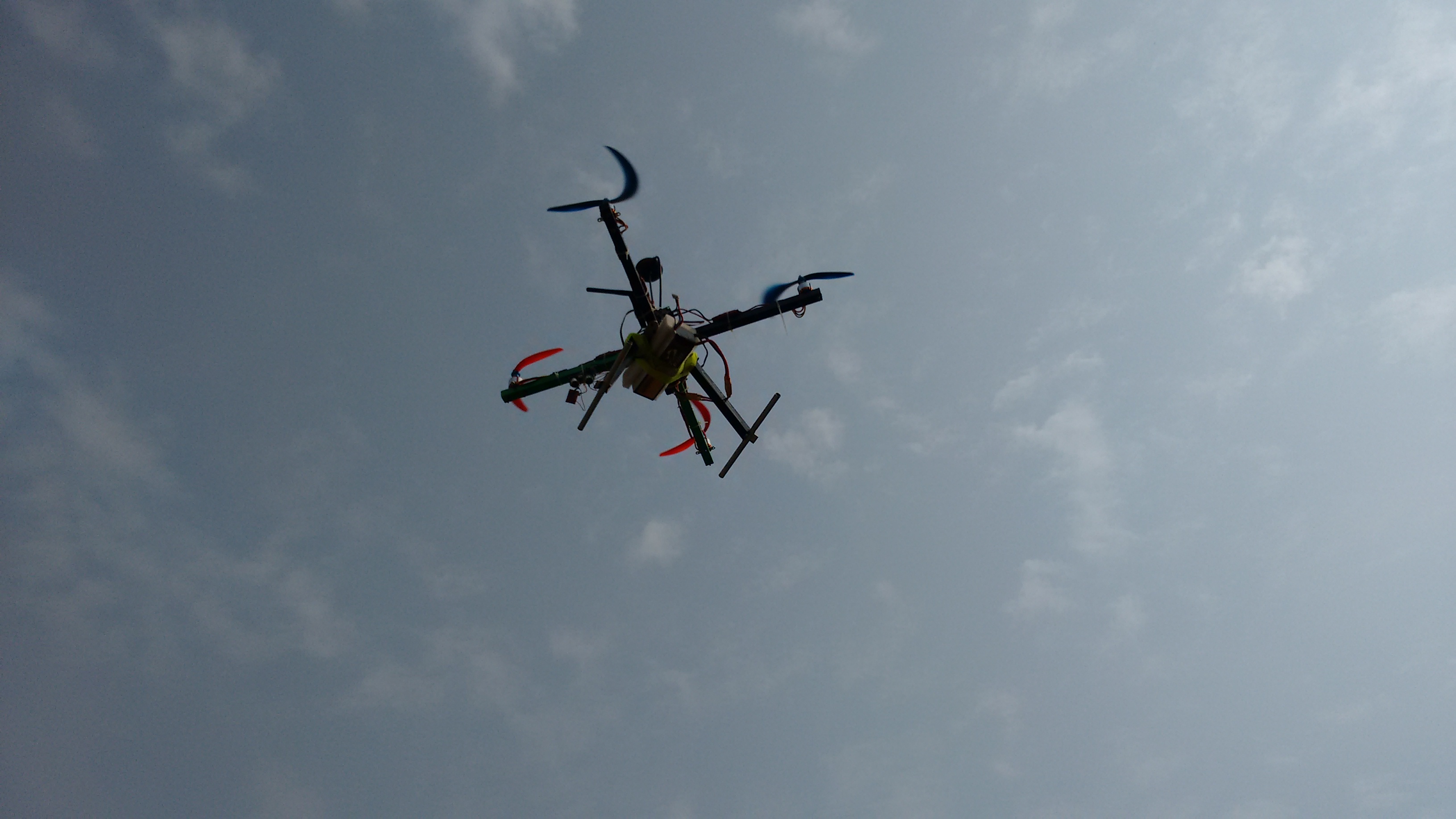

Quadcopters provide stable flight performance, making them ideal for surveillance and aerial photography. Small quadcopters are easy to build because of low cost, low inertial force and simple flight control system. It belongs to a more general class of aerial vehicles called multicopter or multirotor. It's also called quadrotor helicopter or quadrotor. A quadcopter can be manually controlled or can be autonomous. Quadcopter is an unmanned aerial vehicle ( UAV) or drone with four rotors, each with a motor and propeller. We should give more than just definitions.
#Autonomous quad copter how to
Question asks how to control pitch/roll/yaw. Pitch/roll/yaw: video is good but answer text doesn't explain these. Calculating thrust: can't understand the steps: provide an equation. Payload: only first two sentences have a citation. Only first bullet point has a citation.ġ0. Drone parts: why no image for this? It makes sense to talk about parts before talking about design. Motor: how to choose? Frame structure: solid, hollow, lattice, etc. Battery: weight, power delivery, flight time, recharge time, etc. Propeller: wing size, material, # of propellers, etc. Payload is related to required thrust, which in turn affects propeller design.

When it comes to design, choices have to be related to specifications. Does this mean two are spinning CW and other two CCW? Is this always the case? Which two?Ĩ. "Quadcopters have two rotors spinning clockwise (CW) and counterclockwise (CCW)": not clear. Perhaps the placement of the citation can be corrected.ħ. Shouldn't we at least explain in one sentence their application to the quadcopter? For the entire answer, only one citation is given for throttle and elevator. "Newton’s Third Law of motion and other is Bernoullis principle": okay but is this enough. Better to add another source to be sure.Ħ. I checked the cited source but it's not convincing. Not sure if these can be used in a motion/verb sense for quadcopter. Terms "aileron" and "rudder" are actually parts of an aircraft. Pitch and yaw are terms used in this answer but these are introduced much later in the article. Better to rephrase to avoid copyright issues. "V-tail or A-tail is like a Y4 but has much more yaw authority due to it using thrust to turn rather than counter motor torque." Sentence is very similar to the source. Similar problems possibly in other places.Ĥ. Instead move citation to after "shape are as follows:". This implies it's applicable only for that point. : placement of citation is at the end of first bullet point. Use of comma and suffix is to point to a specific section of the reference. Citations are not correct in many places. If there are problems in Summary, readers will skip the rest of the article.Ģ. Summary: "because of its small size": but previous sentence says it can be "big enough to carry a passenger".

Good to see interesting historical photos in Milestones.ġ. The on-board controller (closed-source) is used to act on the roll (Phi) and pitch (Theta), the yaw rotational speed (Psi) and the vertical velocity of the platform (dot) in are sent to the quad-copter at a frequency of 100Hz.0. Sensors data are received by a workstation at 200Hz. Only one of the two video streams can be streamed at the same time. The downward-looking camera is mainly used to estimate the horizontal velocity and the accuracy of this estimation highly depends on the ground texture and the quad-copter's altitude. Central processing unit running an embedded version of Linux operating system.Bottom-camera with a Quarted Video graphics Array (QVGA) resolution (320x240), a FOV of 47.5◦ x 36.5◦ and video streamed at 60 fps.Front-camera with a High-definition (HD) resolution (1280x720), a field of view (FOV) of 73.5° x 58.5° and video streamed at 30 frame per second (fps).Inertial Measurements Units (IMU) including gyroscope, accelerometer, magnetometer, altimeter and pressure sensor.

Dimensions: 53 cm x 52 cm (hull included).The specification of the UAV are as follows: It is equipped with an external hull for indoor navigation and it is mainly piloted using smart-phones and tablets through the application released by the producer over a WiFi network. It represents a valid option for research purposes because it is very affordable ($250 USD in 2017) and it comprises multiple sensors in a unique platform. The work here presented has been done using the proven AR Drone 2.0, produced by the French company Parrot Inc.


 0 kommentar(er)
0 kommentar(er)
